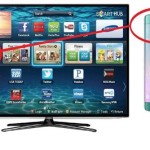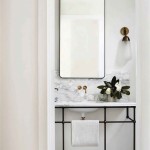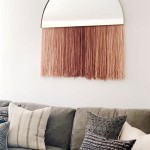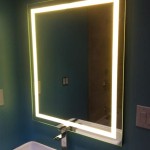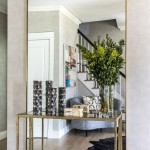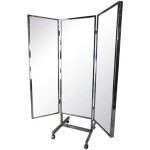Understanding and Utilizing Mirror Effect Spray Paint (Silver)
Mirror effect spray paint, particularly in silver, represents a specialized coating designed to mimic the reflective qualities of a traditional mirror. This type of paint utilizes a unique formulation containing finely ground metallic particles and specialized binders to achieve a highly reflective finish. While not a true mirror, which is created by depositing a thin layer of metal (typically silver or aluminum) onto glass, mirror effect spray paint offers a viable alternative for decorative purposes and craft projects where achieving a mirrored aesthetic is desired but traditional mirroring techniques are impractical or unaffordable.
The effectiveness of mirror effect spray paint hinges on several factors, including the surface preparation, application technique, and the specific product formulation. Unlike standard paints that focus on color and adhesion, mirror effect paints prioritize reflectivity. Achieving the desired mirror-like finish requires careful attention to detail and a thorough understanding of the paint's properties and limitations.
The composition of mirror effect spray paint typically includes a blend of solvents, resins, metallic pigments (primarily aluminum or silver), and additives. The metallic pigments are responsible for the reflective properties, while the resins and solvents act as a carrier and binder, ensuring the pigments adhere to the surface being painted. Additives may include stabilizers, flow agents, and leveling agents, all of which contribute to the overall performance and appearance of the final finish.
One of the primary challenges in formulating mirror effect spray paint is preventing the metallic pigments from clumping together or becoming unevenly distributed within the paint film. This can result in a dull or hazy finish, diminishing the desired reflective effect. Manufacturers often employ specialized techniques to ensure the pigments remain finely dispersed and uniformly aligned, maximizing their ability to reflect light.
Achieving Optimal Results Through Surface Preparation
Surface preparation is paramount when using mirror effect spray paint. The reflective nature of the paint amplifies any imperfections on the substrate, making them highly visible in the final finish. Therefore, the surface must be completely smooth, clean, and free of any dust, grease, or other contaminants. Sanding the surface with progressively finer grits of sandpaper is often necessary to achieve a perfectly smooth foundation.
The type of primer used is also crucial. A smooth, non-porous primer provides a uniform base for the mirror effect paint to adhere to. Primers specifically designed for metallic paints or those that provide a "glass-like" surface are often recommended. The primer should be applied in thin, even coats, allowing each coat to dry completely before applying the next. Any imperfections in the primer layer will be reflected in the final finish, so careful attention to detail is essential during this stage.
Darker colored surfaces can negatively impact the reflectivity of the mirror effect paint. Therefore, applying a light-colored primer, such as white or light gray, can significantly improve the overall reflective properties. The light primer helps to bounce back the light reflected by the metallic pigments, resulting in a brighter and more mirror-like finish.
In addition to cleaning and priming, it may be necessary to seal the surface to prevent any bleed-through of underlying colors or stains. Sealers create a barrier between the substrate and the paint, ensuring that the final finish is consistent and free of any unwanted discoloration. This is particularly important when painting over surfaces with existing finishes or stains.
Application Techniques for Mirror Effect Spray Paint
The application technique plays a critical role in achieving a true mirror effect. Mirror effect spray paint is typically applied in several thin, even coats, rather than one or two thick coats. This allows the metallic pigments to align properly and create a uniform reflective surface. Thick coats can lead to runs, drips, and an uneven distribution of the pigments, resulting in a less-than-desirable finish.
Holding the spray can at a consistent distance from the surface is also crucial. Maintaining a distance of approximately 8-10 inches is generally recommended. Moving the can in smooth, overlapping strokes helps to ensure even coverage and prevent the buildup of paint in certain areas. Avoid starting or stopping the spray can directly over the surface being painted, as this can lead to uneven application.
The drying time between coats is essential. Allowing each coat to dry completely before applying the next prevents the underlying paint from being disturbed and allows the solvents to evaporate properly. This can take anywhere from 15 minutes to several hours, depending on the ambient temperature and humidity. Consult the manufacturer's instructions for specific drying time recommendations.
After the final coat has been applied and allowed to dry completely, some users may choose to apply a clear topcoat to protect the reflective finish. However, it is important to note that many clear topcoats can dull the mirror effect. Therefore, selecting a clear coat specifically designed for use with metallic paints or testing the topcoat on a small, inconspicuous area first is highly recommended.
Understanding Limitations and Post-Application Considerations
Mirror effect spray paint, while offering a visually appealing alternative to traditional mirrors, has inherent limitations that must be considered. The reflectivity achieved with spray paint is not comparable to that of a true mirror, which is manufactured using a specialized process involving the deposition of a thin layer of metal onto glass. The reflective quality of spray paint is often described as "mirror-like" or "highly reflective," but it should not be mistaken for a true mirror.
The durability of mirror effect spray paint is another important consideration. The paint film is often more delicate than standard paints and can be susceptible to scratching, abrasion, and chemical damage. Handling items coated with mirror effect spray paint with care is essential to preserve the finish. Avoid using harsh cleaning agents or abrasive materials, as these can easily damage the reflective surface.
The longevity of the mirror effect can also be affected by environmental factors. Exposure to direct sunlight, humidity, and temperature fluctuations can cause the paint to fade, yellow, or peel over time. Applying a protective clear coat can help to mitigate these effects, but regular maintenance and care are still necessary to maintain the desired appearance.
Furthermore, it is important to choose a mirror effect spray paint that is appropriate for the intended use. Some formulations are specifically designed for indoor use, while others are more suitable for outdoor applications. Selecting the correct product ensures that the finish will withstand the environmental conditions it will be exposed to. Thoroughly reviewing the product specifications and intended use guidelines is crucial before applying the paint.
Finally, responsible disposal of leftover paint and spray cans is important. Follow local regulations for the proper disposal of aerosol cans and paint products. Empty spray cans can often be recycled, while leftover paint should be disposed of as hazardous waste. This helps to protect the environment and ensures that these materials are handled safely.
Rust Oleum Silver Mirror Effect Spray Paint Gloss 150ml Sprayster

Rust Oleum Specialty 6 Oz Mirror Effect Spray Paint 301494 The Home Depot

Mirror Effect Spay Paint Rustoleum Spray Www Rustoleumspraypaint Com

Rust Oleum Specialty 6 Oz Mirror Effect Spray Paint 301494 The Home Depot

Rust Oleum Silver Mirror Effect Multi Surface Spray Paint 150ml Diy At B Q

X1 Rust Oleum Mirror Effect Spray Paint Silver Gloss Finish Art And Craft 150ml 764920659570

Rust Oleum 267727 Specialty Spray Paint Mirror Effect Silver Glass Acrylic 6 Oz

Spray Espelho Efeito Mirror Effect Rust Oleum Parcelamento Sem Juros

Mirror Effect Spray Paint Technique On Resin

Krylon Vs Rustoleum Mirror Spray Paint Comparison


